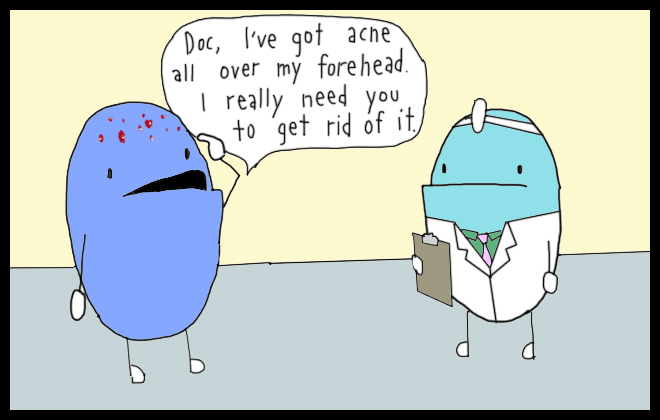Welcome back to Red Pen Tidbits! Last time around we looked into the proper ways to use me, myself, and I. That little tidbit leads us into this week’s discussion about pronouns and their antecedents.
We’ll look at _ steps for understanding them and getting them right (see the pronouns there?). Are you ready?

Step 1: What are pronouns?
As we discussed in Who vs. Whom, pronouns are generalizations of a noun: non-specific. There are 10 types of pronouns, but they all do the same thing. Here’s a list of some of the most common ones we use.

Let’s look at a few example sentences:
- They gave her a present for her birthday.
- He had forgotten it.
- After they got them, we tried to get them back.
**Quick Tip: If you can replace an appropriate noun with the word, then it is a pronoun.
Step 2: What is an antecedent?
Did you notice anything strange about the example sentences above? What? You don’t think they make sense?
Wonderful! You’re right (as usual). They don’t make sense because you have no idea to what/whom the pronouns are referring. This is where antecedents come in.
Antecedents are specific nouns that precede pronouns in order to tell us to what/whom they‘re referring. (Notice: ‘pronouns’ is the antecedent for ‘they’ in this sentence.)

Let’s take a new look at those example sentences above (Notice: ‘sentences’ is the antecedent for ‘those’ in this sentence, but it comes after the pronoun instead of before. This can happen, too!)
- Tanya couldn’t hold in her excitement when her grandparents arrived for her party. They gave her a present for her birthday.
Pronoun: They — Antecedent: grandparents
Pronoun: her — Antecedent: Tanya - When the teary-eyed third-grade boy looked into his teacher’s eyes, he knew the truth about his homework would have to be enough. He had forgotten it.
Pronoun: his, he — Antecedent: boy
Pronoun: it — Antecedent: homework
- The group of bandits swooped in and stole the treasure. We were simply a small assortment of townspeople, but we had found that treasure fair and square. Therefore, after they stole it, we tried to get it back.
Pronoun: they — Antecedent: group of bandits
Pronoun: it — Antecedent: treasure
Pronoun: we — Antecedent: assortment of townspeople
**Quick Tip: The pronoun refers back to the first similar antecedent. In the picture above, the patient is asking for the acne to be removed. However, he is a bit unclear, which means he should have reworded his request.
Step 3: Is there a wrong way to use pronouns and antecedents?
We made it to step three! To answer the above question, yes, there is a wrong way to use it them. These two pieces need to be in agreement, which simply means what we’ve talked about earlier: the pronoun needs to be similar to the antecedent.
- Tanya couldn’t hold in her excitement when her grandparents arrived for her party.
HeThey gave her a present for her birthday. (Since grandparents refers to more than one person, the pronoun also needs to refer to more than one person.)

When you’re writing, you want to examine your words. Look for pronouns that don’t have antecedents. Do your readers know what you’re talking about?
The reader can look back in the same sentence, the same paragraph, or even a paragraph above. The trick is not making them look too far. By the time they get to your pronoun, they should know to what/whom you’re referring.
I’m leaving you with a quick list of things to look for in your writing to make it a little easier:
- sentences that begin with a pronoun
- paragraphs that begin with a pronoun
- multiple pronouns in a single sentence
- multiple antecedents and one pronoun in a single sentence
- pronouns that don’t agree with their antecedent
Challenge
Take out your trusty Writer’s Notebook, and open to the next blank page. Try out a few sentences using pronouns with proper antecedents.
Then, try using them in dialogue! Let me know how it goes in the comments below!
Coming up next…
I hope you’re ready for our next Red Pen Tidbit (July 19) about Commas with Coordinating Conjunctions. (This may be posted a bit early.)

Share with me in the comments below about your most frustrating grammar/usage errors. I will gladly address them in the future!
Resources
Good luck working with them pronouns!! If you need a bit more help after this tidbit, then please check out these other helpful sites.
- “10 Kinds of Pronouns” via learnesl.net
- “Fixing Pronoun Agreement Errors” via Grammar Bytes

2 thoughts on “Red Pen Tidbits 6: Pronouns and Antecedents, 3 steps for getting them right”